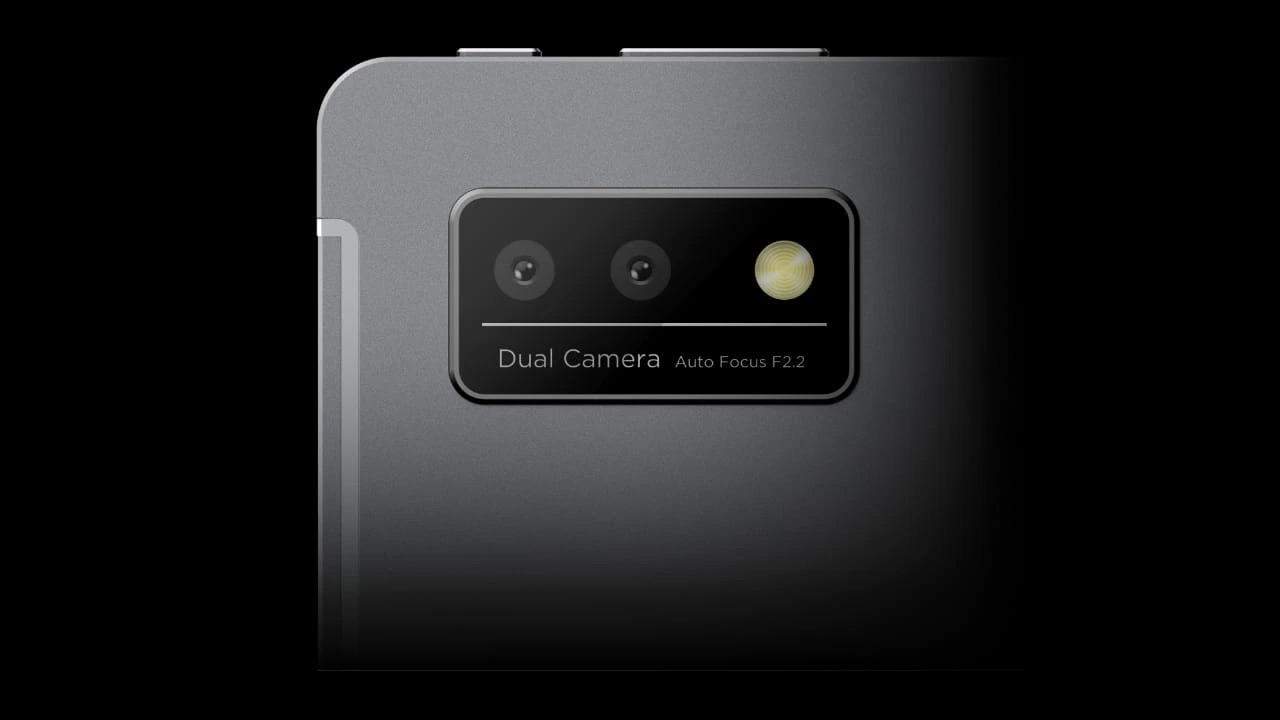“The focus is temporarily less on phones”
Huawei has introduced a whole host of new devices: from the MatePad 11 to the Watch 3 and the FreeBuds 4. All of them work with the new Harmony OS that should run on all kinds of smart devices and make all those devices work together easily. But why isn’t there a Harmony phone yet? Where is the Huawei P50 and what are Huawei’s plans in the Netherlands? Androidworld found out during a Huawei event in Amsterdam.
Contents
Huawei Harmony
Huawei’s Harmony operating system is all ready for the general public, that was the main message during the brand’s online announcement on Wednesday. Harmony is versatile, as it can run on all kinds of smart devices. Whether it’s a phone, a tablet, watch or television. This concept has clear advantages, as developers no longer have to consider individual operating systems when developing apps. The brand also showed how all devices will work together as a so-called ‘super device’.
Huawei’s strategy is well thought out, because we know that Google’s Fuchsia system – which is only now being used for the first time in practice – resembles Harmony in certain aspects, “It is a misunderstanding when people think that because of the sanctions we started working on Harmony in the US, because it isn’t. It’s been in development for much longer,” a Huawei product expert at Androidworld assures. That is of course true, and behind the scenes, Huawei also showed a lot of interest in the development of Fuchsia that took place at Google. Although the same expert admitted that the development of Harmony OS for phones has accelerated because of the American sanctions.
Big advantage or empty box?
For example, Harmony allows your phone to connect to any device that contains a camera. Think of a smart TV, so that you can film from multiple angles with multiple devices at the same time. In theory that’s a nice example of how super devices work, but if Huawei wants it to actually work in practice, the company will have to convince partners to make their products compatible with its operating system. Harmony OS is now open source, so any manufacturer can now actually make their device work with the system. It is important to convince important companies, otherwise that great advantage of Harmony threatens to turn out to be an empty box.
“At the moment we already have a lot of collaborations with partners in China, but it is of course the intention that we also build these in Western Europe” said William Tian, the Western European CEO of Huawei Consumer Business Group at the Amsterdam event. to Android World. “At the moment we are forming the connections. For example, the Nuki Smart Lock already works with Harmony and that is the first step.”
AW: To realize the potential of the technology, you should basically be able to walk into an electronics store and find Harmony-enabled devices everywhere. Whether you buy a smart washing machine, a digital camera or doorbell. When will that be the case?
“More announcements about this will follow in the coming weeks and months, that’s for sure. But it’s a project that should grow in the coming years. With OpenHarmony [de naam van de open-source-variant, nvdr.] we are opening the door to partners.”

Wanted Huawei P50 Pro
AW: Huawei has had a strategy in which the smartphone plays a central role for years. In addition to your phone, you have PCs, smart watches, tablets and so on. Only comes in third place than all other smart devices. Although it now seems that the central protagonist, the smartphone, has remained somewhat in the background at Wednesday’s Harmony presentation. All new devices from Huawei, but no smartphones.
“Huawei’s ‘1 + 8 + n’ strategy with the phone has been around for years, and all this time we have focused on our phones. Now we mainly drive the ‘8’ and ‘n’ devices forward. the one you mention here is one for the long term, and the intent is to connect all the devices from within the smartphone, right now they’re mainly putting the spotlight on our other announcements, but we’re definitely going to keep developing phones. so temporary.”
AW: Huawei CEO Richard Yu admitted that Huawei is suffering from US sanctions and that it is currently tries to bring the P50 to the consumer. He should have been there in the spring. What is going on? When can we expect the P50?
“Unfortunately I can tell you more about the Huawei P50 series. You will have to wait for future announcements for that.”

App Gallery of Petal Search
AW: Huawei launched Petal Search, a way to install apps that aren’t part of the App Gallery on phones. But what does your strategy with smartphones look like now? Will you mainly develop Petal Search further or mainly focus on apps in the App Gallery that are optimized for Huawei devices?
“First of all, we want to convince as many developers as possible to optimize their apps for our ecosystem. We also guide developers in this and an Android app can be optimized very quickly for Harmony. At the moment we offer Petal Search to optimize as much as possible. to make apps possible for the user, but that is temporary. Our main focus is on the AppGallery offering.”
AW: Given the situation in the United States, it is difficult to welcome developer apps from the US, including the popular Google apps, for example. But take a service like Spotify, it is very popular but it is also European. Why doesn’t it work on Harmony OS yet?
“Huawei is in talks with developers to bring their apps to Harmony, but I can’t say anything specific about the party you mention.

AW: But what could be the reason why important apps are missing from your AppGallery, if it’s so easy to customize Android apps as you claim?
“That can be due to various causes. They are of course all different companies and each developer has its own policy. Although it can of course also be technical problems that developers encounter. It is true that Huawei is always open to work with the developer. to find a suitable solution.”
Trust problem?
AW: Huawei stated that users will soon get the choice between Android and iOS on existing models. Do you also continue that line with your new devices?
“It is indeed true that many existing models will soon receive such an upgrade to Harmony, without any obligation. Unfortunately, we cannot yet say anything about such an effect for future models.”

AW: Do you think that Huawei as a brand could have a trust problem with the Dutch consumer? On the one hand you lose access to the Play Store, there are those espionage accusations from the US, you are in the Netherlands excluded from the core of the 5G network and Huawei is mentioned by KPN because it may have spied on millions of Dutch customers through a loophole.
“Let me be clear right away by saying that those allegations on behalf of Huawei have never been proven. We do feel supported by consumers, and that is also proven by the more than 3 billion devices in circulation. Consumers do make a difference. distinction between what are political games on the one hand and what high-quality products are on the other, because that is what we stand for. And as far as the Dutch telecom operators are concerned, we are in talks with all operators to see how we can make eSIM possible in the future. our Watch 3.”
Watch 3 and FreeBuds 4
AW: Let’s go back to the products you recently announced. The Huawei Watch 3 is not called the ‘Watch 3 GT’. After four years you will continue with the regular Watch series. Why then, and does that mean the Watch GT series will come to an end?
“Oh, there is certainly no end to Watch GT, because it is a very successful series of smartwatches for us. You can certainly expect a new production in that category this year. Indeed, it has been 2017 since the Huawei Watch 2 appeared. , and for the past few years we’ve been working on our own software solution to make smart watches, because we were no longer satisfied with the operating systems that were available, so now we have that solution in the form of Harmony OS. Watch and Watch GT is that Watch GT focuses more on sports functions, while Watch emphasizes on the smart functions.”

AW: So the next generation of Watch GT will continue to run on Lite OS and not Harmony?
“I can’t say much about it yet, but I do think the next generation will work on Harmony.”
AW: De FreeBuds 4 come with bigger audio drivers than your high-end wireless earphones, the FreeBuds Pro, but the active noise canceling (ANC) is less able to filter out sounds. Where is the Pro – without a number in the name – relative to the FreeBuds 4 in your lineup? They are also roughly the same price. And what about the FreeBuds 4i released early this year?
“We can be brief about the FreeBuds 4i, that is the entry-level model. Furthermore, it comes down to personal preference whether you prefer the FreeBuds 4 or the Pro. The Pro is an in-ear model, but not every user is there On the other hand, an in-ear model automatically works better with ANC, but thanks to our smart technology that functions with two microphones, we have been able to improve the noise canceling with the FreeBuds 4 compared to the previous generation.”
AW: Thank you very much for this conversation.
“You’re welcome.”
What do you think of Huawei’s strategy with Harmony OS. Will the company be able to showcase its ecosystem with the versatile operating system without focusing heavily on its phones now? What do you think of the new Huawei Watch 3 and the FreeBuds 4? Let us know in the comments at the bottom of this article.



